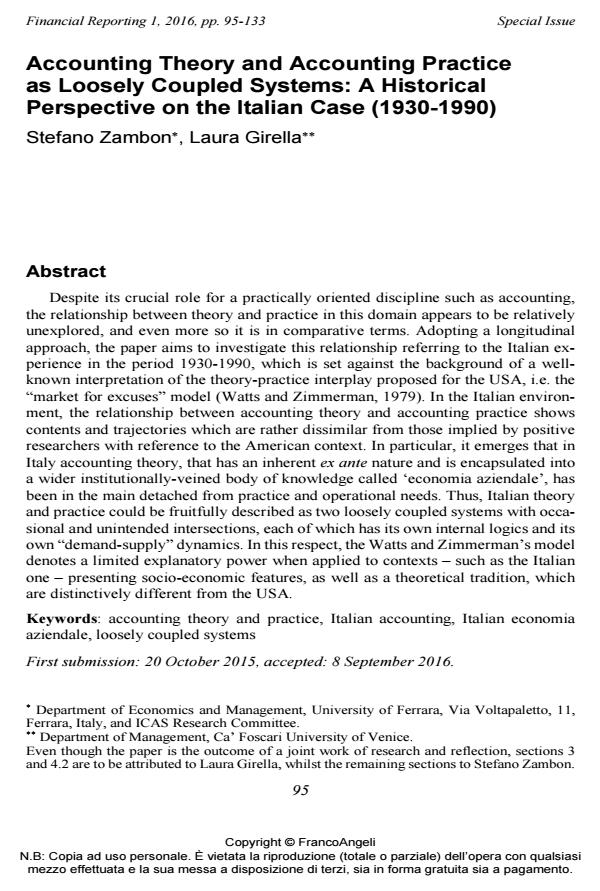Accounting Theory and Accounting Practice as Loosely Coupled Systems: A Historical Perspective on the Italian Case (1930-1990)
Journal title FINANCIAL REPORTING
Author/s Stefano Zambon, Laura Girella
Publishing Year 2016 Issue 2016/1
Language English Pages 39 P. 95-133 File size 334 KB
DOI 10.3280/FR2016-001006
DOI is like a bar code for intellectual property: to have more infomation
click here
Below, you can see the article first page
If you want to buy this article in PDF format, you can do it, following the instructions to buy download credits

FrancoAngeli is member of Publishers International Linking Association, Inc (PILA), a not-for-profit association which run the CrossRef service enabling links to and from online scholarly content.
Keywords: Accounting theory and practice, Italian accounting, Italian economia aziendale, loosely coupled systems
- The assurance of non-financial disclosure: A longitudinal analysis of the academic and professional literature Michele Guidi, Marco Giuliani, Maria Serena Chiucchi, Stefano Marasca, in FINANCIAL REPORTING 2/2021 pp.5
DOI: 10.3280/FR2021-002001 - Cognitive job crafting: A possible response to increasing job insecurity and declining professional prestige Filomena Buonocore, Davide de Gennaro, Marcello Russo, Domenico Salvatore, in Human Resource Management Journal /2020 pp.244
DOI: 10.1111/1748-8583.12270 - Conceptual shifts in accounting: Transplanting the notion of boundary from financial to non-financial reporting Laura Girella, Mario Abela, Elisa Rita Ferrari, in FINANCIAL REPORTING 1/2018 pp.133
DOI: 10.3280/FR2018-001005
Stefano Zambon, Laura Girella, Accounting Theory and Accounting Practice as Loosely Coupled Systems: A Historical Perspective on the Italian Case (1930-1990) in "FINANCIAL REPORTING" 1/2016, pp 95-133, DOI: 10.3280/FR2016-001006